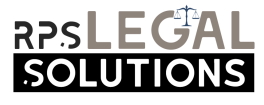Reverse 1031 Exchanges: Exploring The Upsides and Downsides
Image Source: Investopedia
The search for real estate investment solutions that optimize profits while reducing tax obligations never ends. One new and effective technique for real estate investors is the Reverse 1031 Exchange. We’ll examine the benefits and drawbacks of this strategy in this in-depth analysis, which has a resolutely optimistic viewpoint and aims to uncover this investing plan’s full potential.
Introduction
An extension of the standard the Reverse 1031 Exchange enables investors to postpone paying capital gains tax on the sale of an older property by purchasing a new property prior to selling the older one. Even if the idea can appear complicated at first, closer examination of the specifics exposes the amazing advantages of this strategy.
The Upsides of a Reverse 1031 Exchange
1. Tax Deferral Benefits
Tax deferral on capital gains is one of the most alluring features of the Reverse 1031 Exchange. By allowing investors to keep a larger percentage of their profits for reinvestment, this tax-deferral method promotes wealth building. A legally valid framework for this technique has been devised by the Internal Revenue Service (IRS) with explicit standards for tax advantages.
2. Portfolio Diversification
With the Reverse 1031 Exchange, investors have a great deal of freedom in diversifying their real estate holdings. It provides a tactical advantage to investors who wish to diversify their holdings across different property kinds or geographical areas by permitting the purchase of a new property before selling the previous one. Long-term stability is improved and risk reduction through diversification is a tried-and-true method.
3. Property Upgrades
Investors often use Reverse 1031 Exchanges to upgrade their property holdings. This approach allows for the acquisition of newer and more valuable properties while deferring the tax liability. As a result, it can lead to increased rental income and property values, significantly improving the overall return on investment (ROI).
The Downsides of a Reverse 1031 Exchange
1. Complex Process
Executing a Reverse 1031 Exchange can be a complex and time-consuming endeavor. It involves navigating various legal and financial intricacies, often necessitating the involvement of a qualified intermediary. Investors must meticulously adhere to IRS regulations and deadlines to avoid costly mistakes.
2. High Transaction Costs
The Reverse 1031 Exchange process can be expensive. Costs associated with setting up and completing the exchange, including intermediary fees, legal expenses, and property transfer costs, can be substantial. These costs need to be factored into the overall financial analysis.
3. Property Holding Risk
Investors engaged in a Reverse 1031 Exchange may find themselves holding two properties simultaneously. Dual ownership can pose risks, particularly if the relinquished property does not sell as quickly as expected. Managing the financial burden of two properties can strain an investor’s cash flow and resources.
An Emphatic Positive Outlook
Even while there are clear drawbacks to a reverse 1031 exchange, they should be considered in light of the significant advantages they might offer. Realistic prospects for wealth creation and portfolio development are provided by tax deferral, diversification, and property enhancements.
Proficient experts, including certified intermediaries and tax specialists, may aid in efficiently handling the intricacies of the procedure. Even with transaction fees, the possible tax benefits and financ
Frequently Asked Questions
1. Can I navigate a Reverse 1031 Exchange without professional help?
While theoretically possible, it’s not advisable to attempt a Reverse 1031 Exchange without professional assistance due to the complexity of the process. Engaging a qualified intermediary and seeking advice from tax professionals is crucial for a successful exchange.
2. How does the IRS regulate Reverse 1031 Exchanges?
The IRS has established specific rules and guidelines for Reverse 1031 Exchange Investors must adhere to these regulations to ensure their transactions are legal and tax-deferred. Consult the IRS website or a tax professional for comprehensive guidance on compliance.
3. What distinguishes a Reverse 1031 Exchange from a traditional 1031 Exchange?
In a traditional 1031 Exchange, the order of property acquisition and sale is reversed. A Reverse 1031 Exchange allows the new property to be acquired before the old one is relinquished. This key distinction offers unique advantages and adds complexity to the process.
4. Are there alternative strategies for tax deferral in real estate investment?
Yes, there are alternative strategies like a 1031 Exchange or a Qualified Opportunity Zone (QOZ) Investment. Each strategy has its own rules and advantages, so investors should consider which aligns best with their goals.
In conclusion, a Reverse 1031 Exchange presents significant financial gains and tax benefits for real estate investors. By carefully evaluating the upsides and downsides and seeking professional guidance, investors can navigate the intricacies and unlock the full potential of this robust investment tool.






